MALVAVISCUS
Malvaviscus
Fabr., Enum. 155. 1759; Schery in Ann. Miss. Bot. Gard. 29: 203. 1942; Hutch., Gen. Fl. Pl. 2: 565. 1967; Fl. China @ eFloras.org 12: 282; Fl. North Amer. @ eFloras.org vol. 6; Fl. Pak. @ eFloras.org p. 90.
Shrubs or small trees, sometimes scandent, pubescent or glabrous. Leaves simple; stipules linear or subulate, caducous; leaf blade elliptic or ovate, entire or 3-5-lobed, base truncate, rounded or cordate, margin crenate to dentate; foliate nectaries lacking. Flowers solitary, axillary or sometimes in terminal cyme-like clusters, actinomorphic, bisexual, 5-merous, hypogynous. Epicalyx lobes 5-10(-16), linear, lanceolate or spatulate, connate at base. Calyx campanulate or tubular, 5-lobed. Corolla tubular, never fully expanded, petals 5, red or crimson red, bases auriculate remaining adpressed to staminal tube, staminal tube longer than corolla, apex 5-toothed, anthers below teeth, on outside of staminal tube only. Ovary 5-loculed; 1 ovule per loculus. Style branches 10; stigmas capitate. Fruit a fleshy schizocarp (berry), usually red, sometimes white, broader than long, ultimately drying and separating into mericarps; mericarps 5, indehiscent, seeds one per carpel, ellipsoid, wedge-shaped, glabrous.
11 species
Malvaviscus penduliflorus
Malvaviscus penduliflorus
Moc. & Sesse ex DC., Prodr. 1: 445. 1824; Fl. China @ eFloras.org 12: 283; M. arboreus var. longifolius Schery, Ann. Missouri Bot. Gard. 29: 218. 1942; M. arboreus var. penduliflorus (Moc. & Sesse ex DC.) Schery, Ann. Miss. Bot. Gard. 29(3): 223-226. 1942; Fl. Pak. @ eFloras.org p. 91; M. arboreus Cav. subsp. penduliflorus (Moc. & Sesse ex DC.) Hadac, Phytotax. 5: 432. 1970.
Perennial shrubs, up to 2 m tall. Branchlets villous to glabrate. Stipules ca. 4 mm long, filiform, caducous. Petiole in branchlets 1-2 cm long, villous; in older leaves up to 7.5 cm long; leaf blade mostly unlobed, occasionally 2 unequal lobes, 6-12(-16) cm x 2.5-6(-9.5) cm, lanceolate to narrowly ovate, apex acuminate, margin crenate-serrate, base broadly cuneate to nearly rounded, basal veins 3(or 5). Flowers actinomorphic, bisexual, 5-merous, hypogynous, ca. 8 cm long, solitary, axillary or in terminal cyme-like clusters because of reduction or absence of leaves (stipules at base of flowers), tubular, slightly expanded terminally, pendulous. Peduncle 2-6 mm, villous. Epicalyx lobes 7-8, slightly connate at base (tube 3 mm long), 1.4-1.6 mm x 2.5-3 mm, spatulate, margin ciliate. Calyx campanulate or tubular, 5-lobed, slightly longer than epicalyx, 1.8 cm long, lobes ca. 6 mm long, triangular lanceolate, margin ciliate. Corolla tubular, petals 5, twisted, red or crimson-red, ca. 5.7 cm x 2 cm, bases auriculate, remaining adpressed to staminal tube. Stamens many, monoadelphous; staminal tube ca. 6.5-7 cm, exserted, longer than corolla, apex 5-toothed, anthers below teeth on outside of staminal tube only, anthers 2 mm long, oblong. Ovary 5-locular, 1 ovule per loculus; style branches 10, red hairy; stigma capitate or discoid, hairy.
Fruit a fleshy schizocarp, usually red, broader than long, ultimately dry separating into mericarps, mericarps 5, indehiscent (Fruit not observed).
Common Names: Pendulous Sleeping Hibiscus, Sleepy Hibiscus, Mexican Turk’s Cap
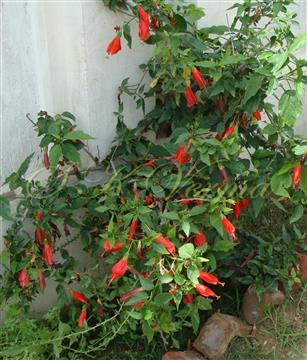
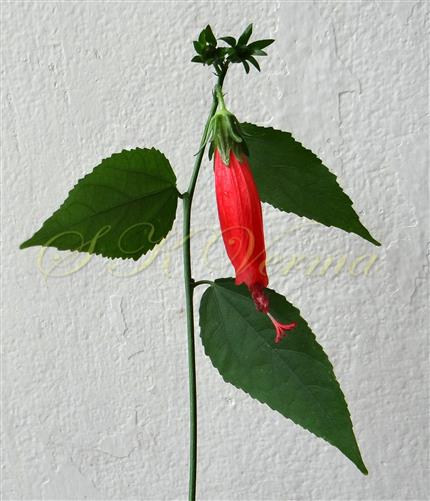
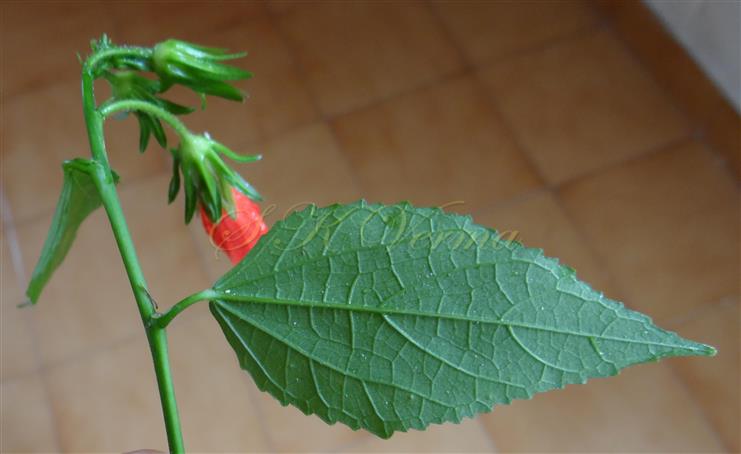
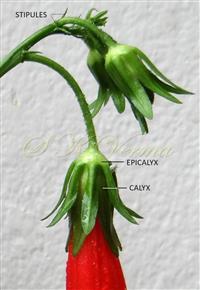
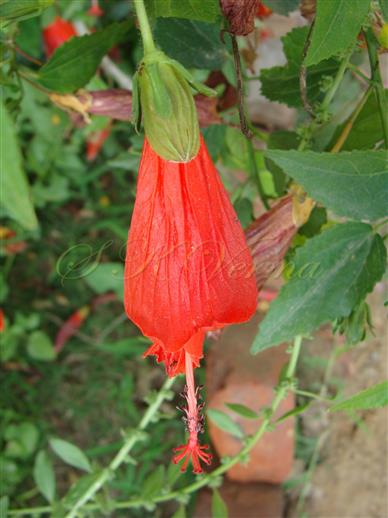
-DSC02761.jpg)
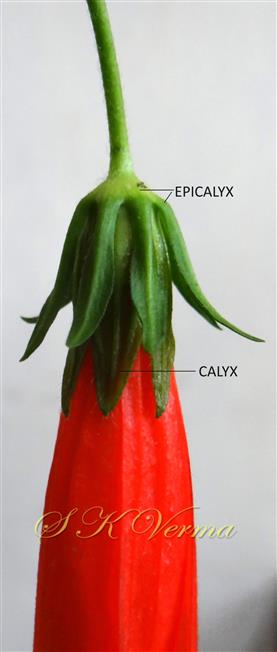
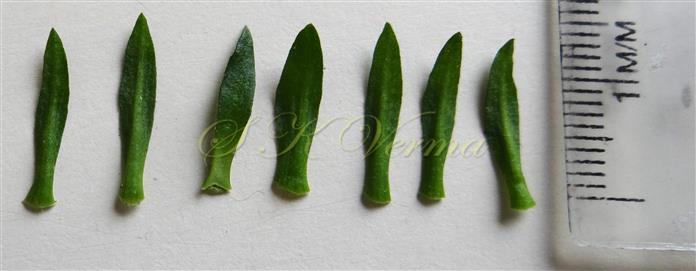
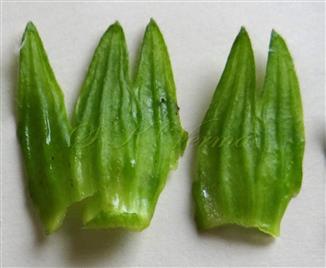
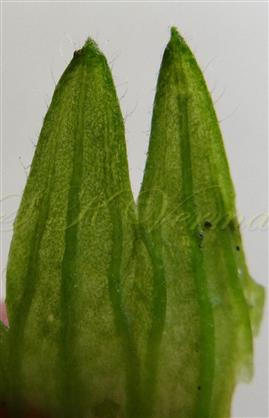
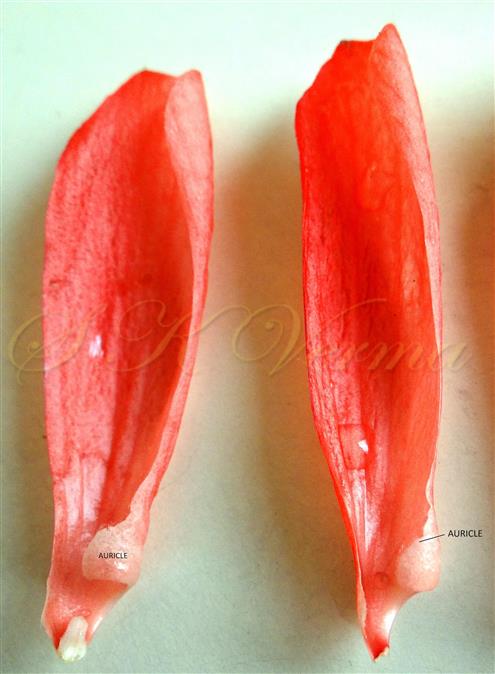
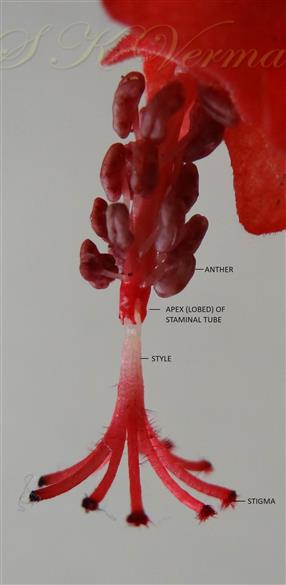
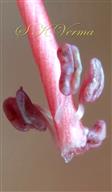
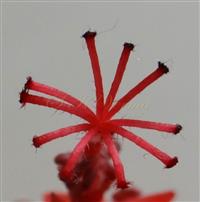






-DSC02761.jpg)







